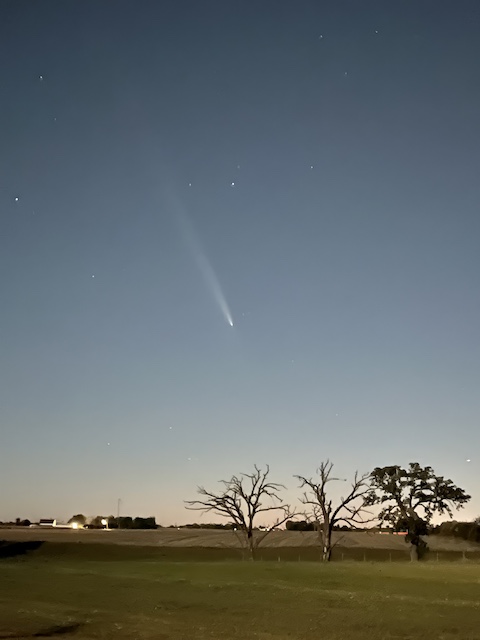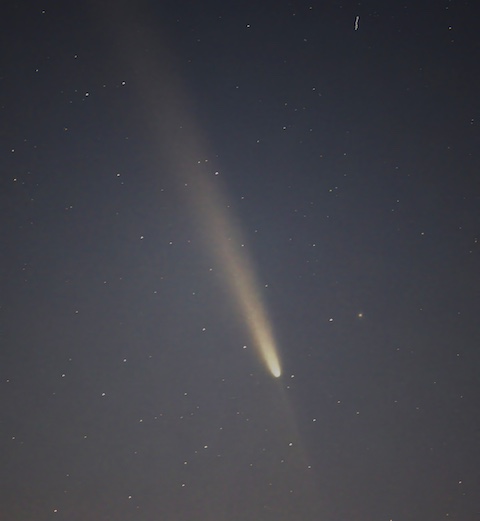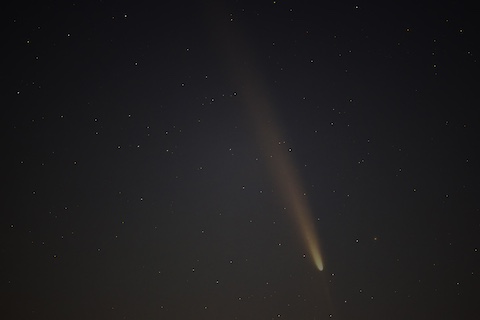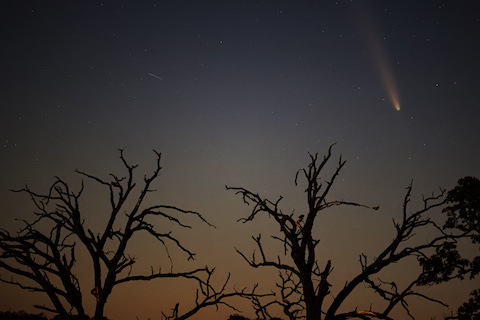Since last month’s Reflections on the Fox column, some very significant events have occurred in the skies over the Fox River Valley. First, on the evening of Thursday, October 10, another magnificent display of the aurora borealis occurred a little after 9 p.m. The aurora displays are a result of solar particles expelled in coronal mass ejections (CME’s) from the sun interacting with atoms in the Earth’s upper atmosphere.
The Sun has currently reached the peak of its activity in this 11-year cycle as announced by the National Oceanic and Atmospheric Administration (NOAA) this past Tuesday, October 15. Sunspot activity resulting in solar flares and prominences that create CME’s are occurring and will continue to occur frequently over the next year probably resulting in quite a few more chances for us to observe beautiful displays of the aurora borealis over the Fox River Valley region!
Second, and the topic of this month’s column, is the ongoing appearance of the comet C/2023 A3 (Tsuchinshan – ATLAS) in the evening skies over the Fox River Valley. This particular comet is making a far rarer appearance than even the aurora borealis as its orbit brings it within view of Earth only once every 80,000 years! The comet reached perihelion (its closest approach to the Sun) on September 27, 2024 at a distance of about 36 million miles.
It’s closest approach to Earth occurred on Saturday, October 12, 2024 at a distance of 44 million miles. That date was also the first time the comet was possibly visible in the northern hemisphere and the Fox River Valley rising low on the western horizon. it was also at its brightest on that date. Cloud cover made it impossible for me to observe the comet until Tuesday evening, October 15. While I could make out the dim outline of the comet with my naked eye, using the night feature on my iPhone camera made it readily apparent.

Using my Canon R7 camera paired with a Rokinon 2.0/135mm lens yielded more detailed shots than I could get with the cell phone. The setting that seemed to work best for me was using the lens wide open at f2.0 with a 1.6 second exposure and an ISO setting of 1600. The following pictures are edited single exposures taken with those settings.
The comet will continue to be visible here through October 24, however it will continue to dim as it moves farther away from the Earth each day at the amazing speed of about 150,000 miles per hour!
The nucleus or head of the comet is a ball of frozen gases approximately 20 to 40 kilometers in diameter. Comet C/2023 A3 is relatively large as comets go as a more typical comet’s nucleus is around 10 kilometers in diameter. As comets approach the Sun from the deep space Oort Cloud where they originate, the Sun’s energy melts the solid ice into gases that create a coma around the nucleus that appears to glow in the light of the Sun.
The gases are also swept away from the comet’s nucleus by the solar “wind” that emanates from the sun. These gases that are swept away from the nucleus form the comet’s tail. The tail of any comet always points away from the Sun because of the effect of the solar wind, regardless of its direction of travel.

On Tuesday night, Comet A/2023 A3 exhibited what is known an “anti-tail,” or one that extends in the opposite direction from the real tail. The following picture shows the anti-tail. Also, the comet was passing a globular star cluster known as M5, a cluster of around 100,000 stars located approximately 25,000 light years away in our Milky Way galaxy. It is the fuzzy ball which is two objects to the right and slightly above the head of the comet.
If you get a chance to get out before October 24, try to see the comet in the western sky.
It really is a once-in-a-lifetime experience. Observing the skies over our area has been really rewarding lately. So until next month, keep your eyes to the skies and keep on fixin’ the Fox!





